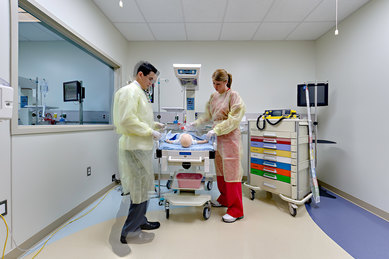Nursing Education
Towards a New Framework for Nursing Education
Healthcare is in a period of great change and innovation abounds in ways never imagined. Healthcare reform is unfolding, and whatever it becomes, it is inevitable that care will be given to people in settings that align with low-cost and high-quality environments. In 2008, the Robert Wood Johnson Foundation (RWJF) in conjunction with the Institute of Medicine (IOM) developed an “action-oriented blueprint for the future of nursing" to establish a direction for the transformation of the nursing profession in response to a reformed healthcare system.
Nurses, using a holistic approach to intersect with patients, families, and communities, will be central and critical to these changed delivery models. It can be expected that nurses must lead, select, and help to evaluate new models and practice settings. Faculty is challenged to remain on the forefront to prepare a workforce capable of adapting to change. This will require close attention to emerging competencies needed, pedagogical approaches that are sound, and attention to the role that facility design can and will play in simulating the clinical, home, school, and business environments were care is likely to be delivered.
As architectural design professionals deeply involved in both healthcare and higher education, SmithGroup leadership is keenly aware of the need to understand how these new facilities should function to best support educators and students. To this end, SmithGroup hosted nine nursing school deans and administrators from across the country in a roundtable discussion of the challenges and opportunities confronting nursing education today. This document summarizes that conversation, and proposes strategies that would allow nursing schools to adapt to a quickly evolving health care system. As this group continues to meet, these concepts will be evaluated and refined, with the goal of creating a comprehensive education and facility design framework for nursing schools.
